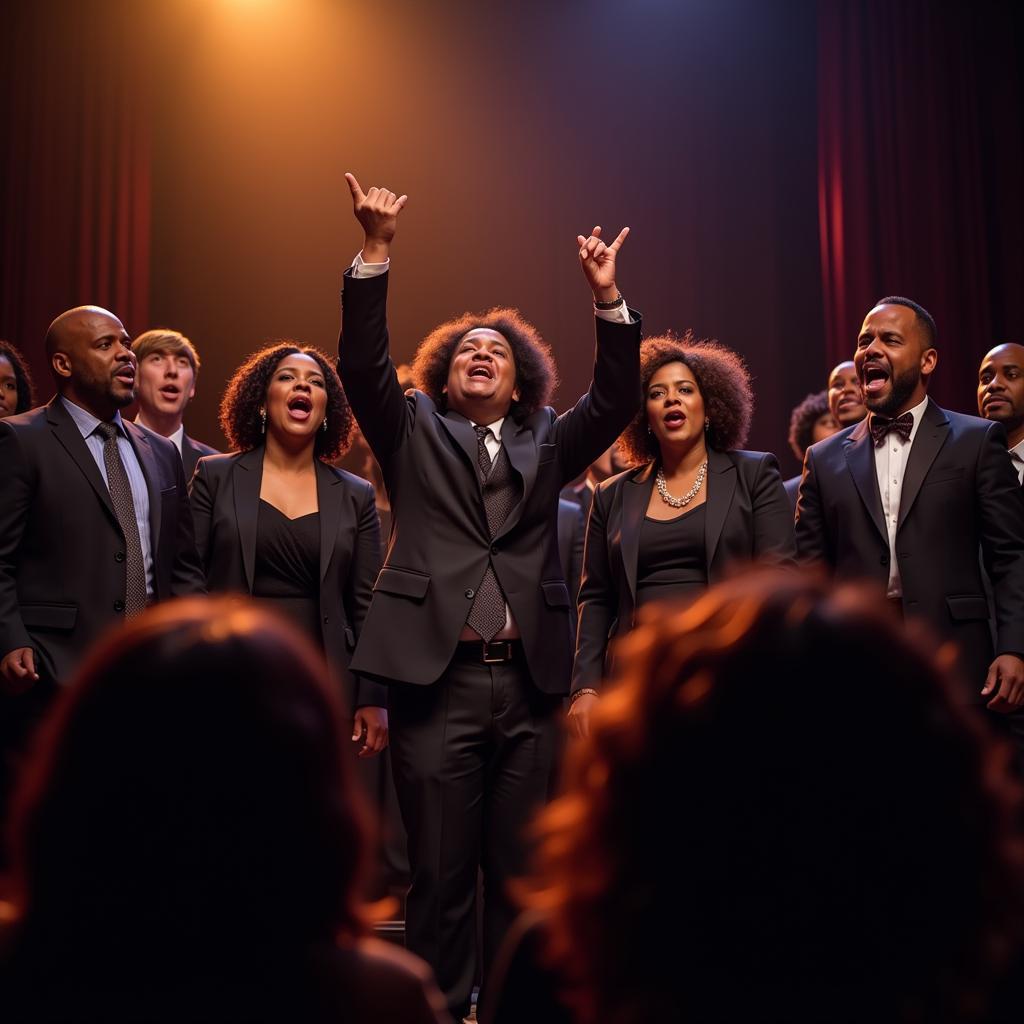Understanding African American Culture: Body Language
African American culture is rich and diverse, shaped by a unique history and expressed through various forms of art, music, and tradition. Understanding African American Culture-body Language adds another layer to this richness, providing insights into nonverbal communication nuances that often go unnoticed. This article delves into the fascinating world of African American body language, exploring its significance and offering a glimpse into its complexities.
Decoding Nonverbal Cues in African American Culture
Body language plays a crucial role in communication across all cultures, and the African American community is no exception. While some gestures may be universal, others hold specific meanings within this cultural context. Recognizing these nuances is essential for fostering effective communication and demonstrating cultural sensitivity. For example, direct eye contact can be seen as a sign of respect and engagement, while avoiding eye contact might be interpreted as a sign of deference or shyness, not necessarily disrespect. Interpreting these cues requires careful consideration of the individual and the specific situation.
The Power of the Eyes: Direct Gaze and its Significance
Eye contact in African American culture-body language can convey a multitude of messages. Maintaining steady eye contact during a conversation is often seen as a sign of respect, attentiveness, and honesty. However, prolonged staring can be perceived as aggressive or challenging. It’s a delicate balance that often relies on the overall context of the interaction.
Head Movements and Gestures: Subtle Signals
Head nods and subtle head movements can communicate agreement, understanding, or acknowledgment. These nonverbal cues can often be more revealing than spoken words. A slight tilt of the head can signal curiosity or questioning, while a quick, sharp nod can emphasize a point or express agreement.
The Role of Touch: Expressing Connection and Support
Touch, within appropriate boundaries, can be a powerful form of communication in African American culture. A pat on the back, a hug, or a handshake can express warmth, support, and camaraderie. However, as with all forms of body language, context and individual preferences are paramount.
Navigating Cultural Differences in Body Language
Understanding the nuances of African American body language is crucial for effective cross-cultural communication. Misinterpreting nonverbal cues can lead to misunderstandings and miscommunication. It’s important to remember that these are general observations and individual variations always exist.
Common Misinterpretations and How to Avoid Them
One common misconception is that certain hand gestures used within the African American community are universally understood. This can lead to misinterpretations and unintended offense. It’s important to be mindful of the context and avoid making assumptions about the meaning of gestures without understanding their cultural significance.
Building Bridges Through Cultural Awareness
By actively learning about and respecting cultural differences in body language, we can build stronger relationships and foster more effective communication. This understanding is particularly important in diverse workplaces, educational settings, and social interactions.
Conclusion: Embracing the Richness of African American Body Language
African American culture-body language is a complex and nuanced form of communication that reflects the rich history and traditions of this community. By learning to recognize and interpret these nonverbal cues, we can gain a deeper understanding of African American culture and build stronger, more meaningful relationships. Embracing cultural sensitivity and open communication is key to fostering understanding and respect across all cultures.
FAQ
- What are some common hand gestures in African American culture? While specific hand gestures vary, it’s essential to understand that their meanings can be context-dependent. Observe and learn rather than making assumptions.
- Is direct eye contact always expected in African American culture? Generally, yes, but prolonged staring can be perceived as aggressive.
- How can I learn more about African American body language? Engage with diverse communities, read books and articles, and attend cultural events.
- Why is it important to understand cultural differences in body language? It fosters effective communication, prevents misunderstandings, and promotes respect.
- Are there any resources available for learning more about African American culture? Numerous books, documentaries, and online resources offer valuable insights into this rich culture.
- What are some tips for respectful communication across cultures? Be open-minded, observant, and willing to learn. Avoid making assumptions and be respectful of individual differences.
- How does body language contribute to overall communication? Nonverbal cues can significantly impact the message being conveyed, adding layers of meaning and emotion.
Need support? Contact us 24/7: Phone: +255768904061, Email: kaka.mag@gmail.com or visit us at Mbarali DC Mawindi, Kangaga, Tanzania.

